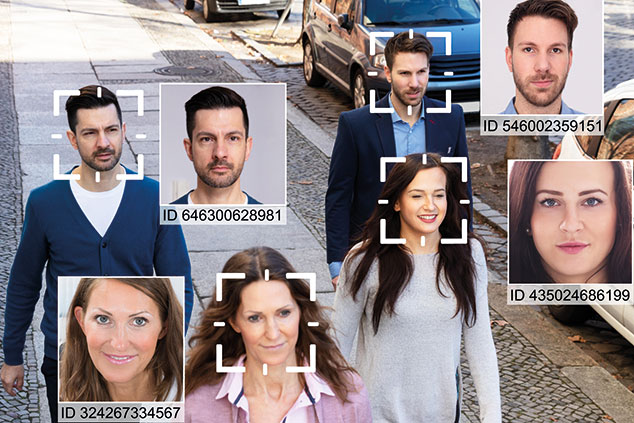
Facial recognition technology, you might think, belongs in a dystopian nightmare. Imagine cameras tracking your every move, knowing exactly who you are, everything you’ve done, what you like and who you meet. But it’s fiction no longer. Married with artificial intelligence (AI), the swarm of cameras perched on buildings and lamp posts the world over can now do all that and much, much more. And it won’t be long before the technology is everywhere.
Of course, there are non-Orwellian uses of the technology. Your phone’s camera can automatically pick out the faces of people you want to capture and make sure they’re in focus. You can unlock your phone just by looking at it. Your face can open doors, with many companies now using security systems that check faces and unlock restricted areas to authorised employees. But with technology this powerful, it’s inevitable that some of the biggest users are governments and security forces. If you’ve crossed a border recently, you may well have been obliged to stare into a camera comparing your visage to the face on the passport. That sounds reasonable. But state use goes much further than that.
Keeping an eye on you
UK police forces have started using facial recognition systems in the last four years, notes The Guardian. South Wales Police has trialled the technology to scan faces in crowds at major sporting events and check them against a “watch list” drawn from the 12.5 million faces on the police national database.
In Malaysia, police are using facial recognition software built by Chinese startup Yitu Technology on their body cameras to scan and identify faces. And in Singapore, the government is aiming to install cameras on more than 100,000 lamp posts which may, it says, “be used for performing crowd analytics and supporting follow-up investigation in the event of a terror incident.”
But nowhere has adopted the technology more enthusiastically than China. The Chinese government plans to be able to identify “anyone, anytime, anywhere in China within three seconds”, says the South China Morning Post. Its spending on video surveillance makes up 46% of the $17.3bn global market, according to Radio Free Asia, a US-government backed broadcaster.
The most extreme case is in Xinjiang province, where the government has set up a network of cameras to monitor the minority Uighur population. Individuals who have come to the state’s attention are watched around the clock. If they stray more than 300 metres from “safe areas” – their home or place of work, for example – the police are alerted. The Uighurs’ homeland “has become an open-air prison”, says lshat Hasan, president of the US-based Uyghur American Association exile group.
Subscribers can read it in the digital edition or app